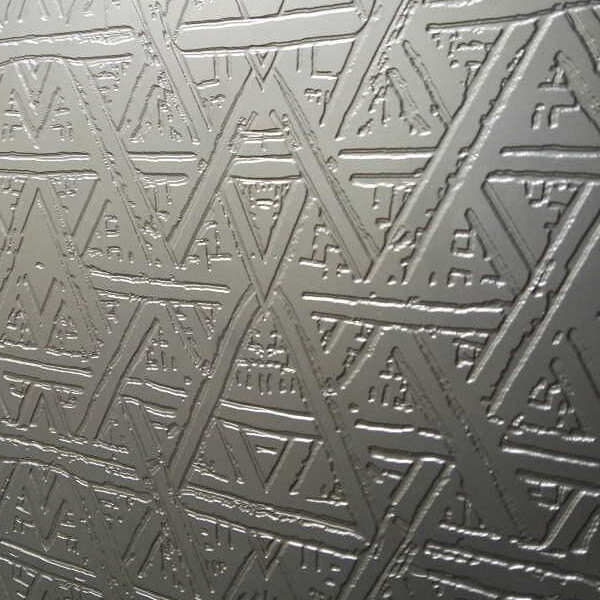1. Core Definition and Process
An embossed plate refers to a metal sheet (e.g., aluminum, stainless steel, copper, or zinc-iron alloy) that undergoes a manufacturing process to create raised or depressed patterns on its surface. This technique, known as embossing, applies heat and pressure using specialized dies or rollers to imprint designs onto the material. The result is a textured surface that combines aesthetic appeal with functional enhancements like improved grip, durability, and structural reinforcement.
Key Process Variants:
Dry Embossing: Uses pressure alone to create patterns.
Heat Embossing: Involves heating the material to set the design permanently.
Industrial Embossing: Employs hydraulic presses or rollers for large-scale production, common in metalworking.
2. Materials and Manufacturing Techniques
Embossed plates are fabricated from diverse metals, each selected for specific properties:
Aluminum: Lightweight, corrosion-resistant, and ideal for tread plates (e.g., staircases, marine decks).
Stainless Steel: Offers strength and hygiene, used in architectural cladding and kitchen equipment.
Copper/Zinc-Iron Alloys: Chosen for decorative applications due to their malleability and visual appeal.
Manufacturing Workflow:
Design Transfer: Custom dies or rollers imprint patterns (e.g., geometric shapes, floral motifs, or abstract textures).
Pressure Application: Industrial machinery exerts 50–300 tons of force to emboss the sheet.
Finishing: Optional coatings (e.g., anti-corrosion layers) enhance longevity.

3. Advantages Over Flat Plates
Durability: Textured surfaces resist scratches, dents, and wear.
Safety: Raised patterns provide slip resistance in wet/oily environments.
Aesthetic Versatility: Mimics natural materials (e.g., wood grain, stone) for high-end design.
Cost Efficiency: Combines decoration and function in a single process, reducing secondary treatments.
4. Market Trends and Innovations
The global embossed plate market is projected to grow at 8.5% CAGR (2022–2027), driven by:
Sustainability: Recyclable metals align with eco-friendly construction trends.
Customization: Digital tooling enables bespoke patterns for niche applications (e.g., branded interior decor).
Technology Integration: Embossed plates in HVAC systems reduce energy consumption via improved thermal dynamics.
Embossed plates epitomize the fusion of art and engineering, transforming utilitarian metal sheets into multifunctional assets. From preventing slips on industrial staircases to enabling energy-efficient cooling systems, their textured surfaces address both practical and aesthetic demands. As manufacturing technologies evolve, these plates will continue to expand their role in sustainable design and safety-critical applications worldwide.



View More(Total0)Comment Lists